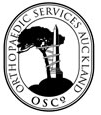Achilles Tendon Ruptures
This is a relatively common, and surprisingly, painless injury. It seems to happen almost as an 'act of God', completely out of the blue during strenuous sports activity (usually). Patients describe a sense of a 'shot going off' or being hit hard in the back of the heel. I once saw a patient with an Achilles rupture sustained on the squash court earlier in the day. His mate accompanying him had a black eye! There does not seem to be any form of preventive effect against this injury by pre-sport warm-up or stretching.
These tendon ruptures, treated in foot-down (equinus) fibreglass weight bearing casts for 8 weeks, will heal uneventfully. The rate of healing to the point where there is enough tensile strength in the tendon to be safely out of plaster or a protective boot takes all of this time, and it matters not whether the tendon has been surgically repaired – all this does is close the tendon gap with a low tensile strength repair. However, under fairly close supervision, this does allow the option of earliermobilisation of the tendon, which helps to avert a slow recovery due to immobilisation joint stiffness. If there is not a pressing timetable for an optimally quick recovery from this injury, surgical repair of a primary Achilles tendon rupture is not indicated.
The main concern following treatment of an Achilles tendon rupture is the risk of a re-rupture. Following 8 weeks of cast treatment, the rate of re-rupture is about 5%. If the tendon has been surgically repaired, this re-rupture rate approximately halves. The risk of a re-rupture drops off with time most will occur within the first 4-6 weeks out of plaster. The majority of those sustaining a re-ruptureare men, and there is usually some uncontrolled or unwise activity to account for it. It does seem that women are more careful. The common scenarios are a mis-step off a kerb/step or into a pothole, causing the foot to be forced up and the Achilles tendon to be put under sudden stretch. Sudden push-off acceleration movements have the same effect. Walking on sand without protective heeled shoes has resulted in many a re-rupture. The treatment is surgical repair and another 8 weeks in plaster.
Following cast or protective boot removal, it is wise to use heel-raised shoes (modified by an orthotist) for at least 2 weeks or until the full range of up movement (dorsiflexion) of the ankle has been regained. A physiotherapist may need to assist if there is difficulty regaining this range of movement. At the 3 week point, heel raise exercises need to start to restore calf muscle strength. It may take some 2-3 months of work to achieve this, at which time a return to sport can be considered.
